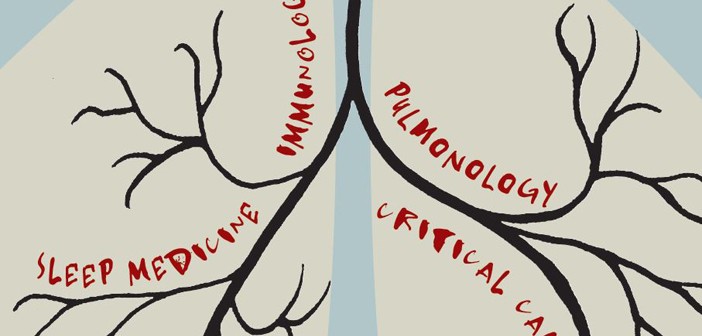Think Positive
“Think like a proton, always positive” reads a sign tacked to the bulletin board above Jamieson’s desk. Jamieson arrived at Brown last summer. When asked what her first year has been like, she laughs and says, “busy.”
Powered by her positive attitude and her love of coffee, she’s hit the ground running. She applied for (and won) grants; set up the lab she shares with her husband, Christopher de Graffenried, PhD, assistant professor of molecular microbiol-ogy and immunology; and formed collaborations with multiple researchers and clinicians at Brown.
In fact, Jamieson’s collaboration with Elizabeth Harrington, PhD, associate professor of medicine, was sparked before she was even hired, during her interview when Harrington asked what happens to endothelial cells during coinfections with legionella and the flu. Jamieson is now exploring that question, using systems set up by Harrington’s lab.
Just as protons attract electrons, collaborations at Brown occur naturally when researchers are in close proximity. Jamieson credits BIRDs for creating a space where she could meet potential collaborators and learn about their research. It was at a BIRDs meeting where she met Sharon Rounds, MD, director of the CardioPulmonary Vascular Biology Center, an NIH Center of Biomedical Research Excellence (COBRE). Jamieson has since received a COBRE pilot project grant to study the effects of lung infection on endothelial cell function.
BIRDs was founded by Jack A. Elias, MD, dean of medicine and biological sciences, with the major goal of pushing forward translational research on pulmonary and respiratory diseases. To that end, BIRDs journal clubs encourage the comingling of basic scientists, like Jamieson, with clinicians. “It has been interesting to hear their different perspectives on what’s important and what’s not important,” Jamieson says. She has plans to work with two clinicians: Elias, to look at changes in the lung in his “smoking mice”; and Jorge Albina, MD, professor of surgery, to study how flu infection affects surgical wound repair, as part of a DEANS (Dean’s Emerging Areas of New Science) Award project.
Jamieson’s enthusiasm for her research is clear when she gives a tour of her lab. She beams while showing off a specialized incubator called a “slide moat” and the brand-new Q-PCR machine (“my baby”), and puts on gloves to help a student cast an agarose gel. It has to be said: her enthusiasm is infectious.




